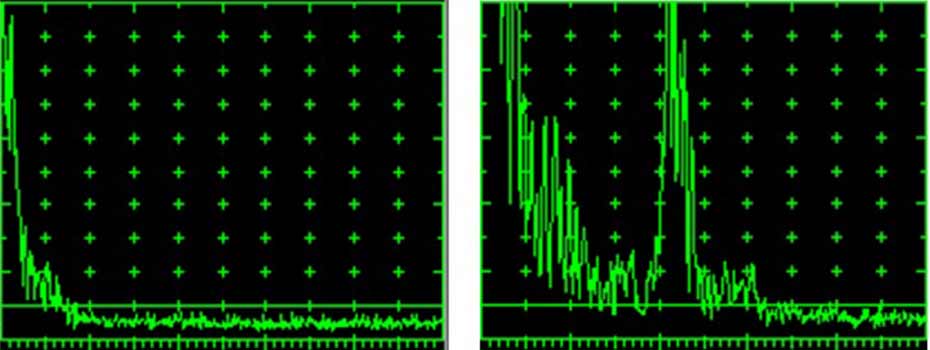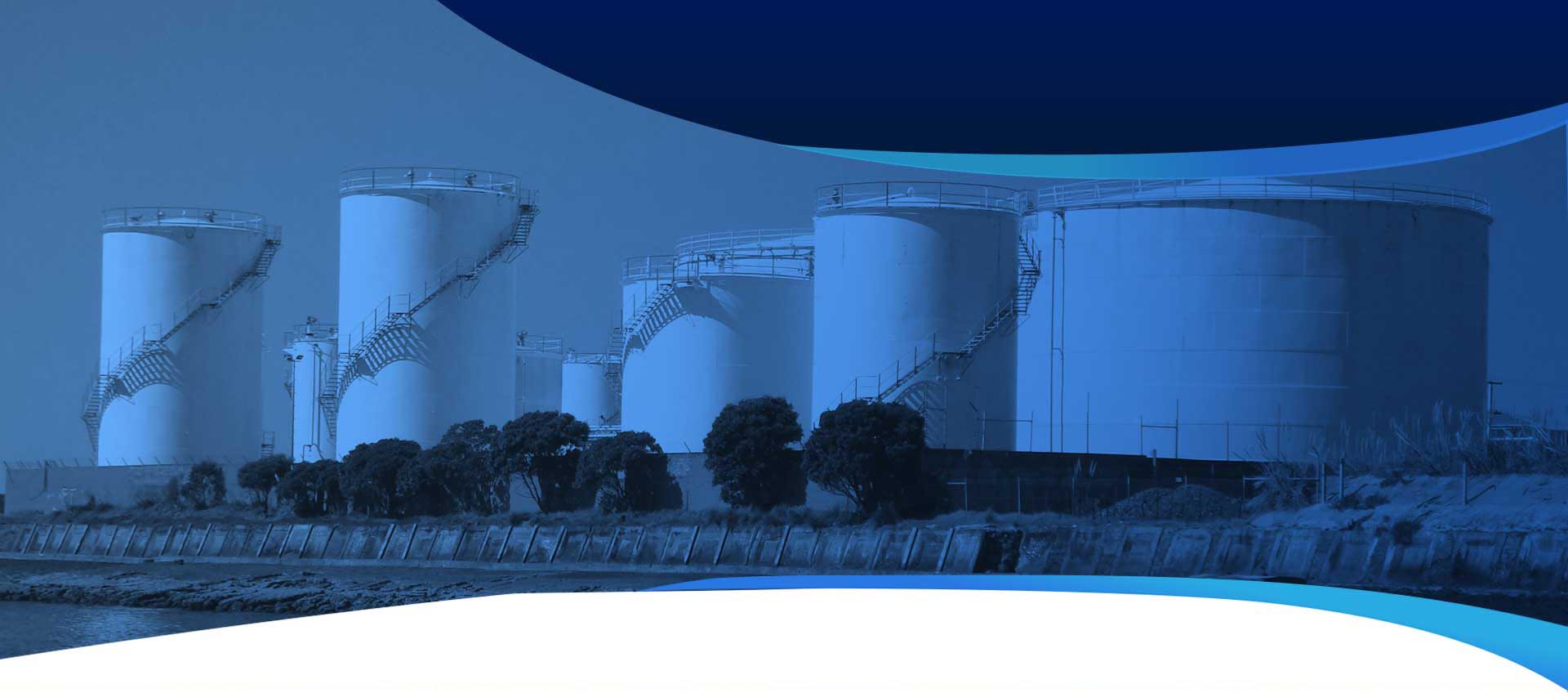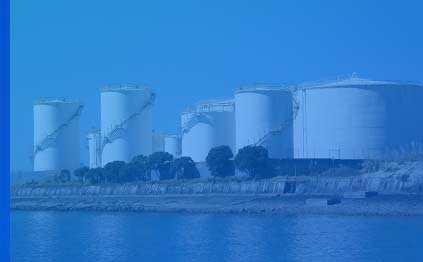Oil and Chemical
Annular Ring Inspection
TISEC utilizes long-range, guided ultrasonic waves for inspection of annular plate of aboveground storage tanks (AST) while they are in service.
The principle is based on sending guided plate waves into the base of the AST from the transducer placed in the chime area. The plate wave provides full inspection coverage. When corrosion, pitting, and erosion are present, the ultrasonic waves modes convert and are received by the same transducer.
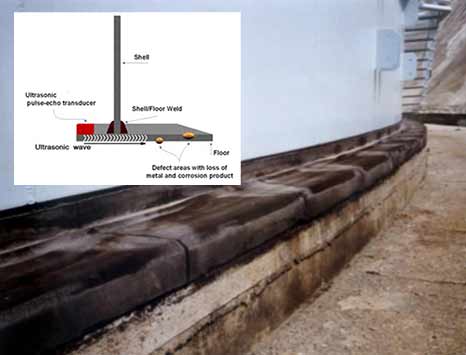
The method detects defects on both sides of the floor but does not differentiate between these two types of defects. Moreover, a minimum of two-inch extension outside the tank is required for placement of the transducer to launch the inspection
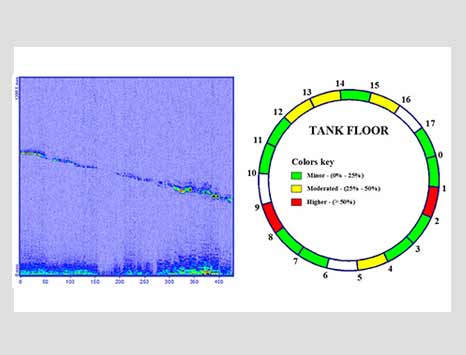
According to the time interval recorded during the signal flight and signal amplitude, the position and morphology of the defects can be displayed in ultrasonic A, B and C-Scans. The B and C scans are developed using a linear scan along the chime area with the distance logged as a function of time or distance encoder. This accommodates a simple linear scan as well as probe swiveling and full ultrasonic waveform recording. The test method provides sufficient data to divide the annular ring into zones related to severity ranking. This is valuable information for tank maintenance program.
40 years of experience
TISEC personnel have over 40 years of experience in the development and application of long-range, guided-wave ultrasonics. The tank floor inspection technology has been further developed most recently under research programs for advanced military and transportation infrastructure applications.
